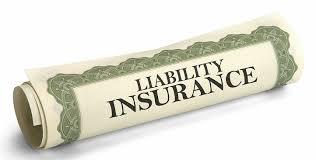The Senior Driver's Guide to Affordable and Smart Car Insurance Choices
As seniors enter retirement, managing expenses becomes a priority—without sacrificing quality. Car insurance is one area where older drivers can often find significant savings, thanks to discounts and tailored policy options. With a little research and the right approach, seniors can secure reliable coverage that fits both their needs and their budget.

Introduction
As the silver generation continues to grow, more retirees are seeking ways to manage expenses without compromising quality of life. Car insurance, as an essential recurring expense, can be a significant area for savings through strategic planning and smart policy choices. This guide offers a comprehensive overview of how older adults can obtain high-quality yet affordable auto insurance through discounts, insurer comparisons, policy adjustments, and long-term planning.
Chapter 1: Why Seniors Can Access Better Insurance Rates
Senior drivers are often classified as lower-risk policyholders due to their extensive driving experience, generally cautious habits, and typically lower annual mileage. These factors allow insurance providers to offer more competitive pricing. Additionally, changes in lifestyle and travel patterns after retirement create further opportunities for savings.
Actuarial data indicate that drivers between the ages of 55 and 75 have lower accident rates compared to younger demographics—a fact that is directly reflected in insurance premiums. While rates may gradually increase after age 75 due to potential changes in vision or reflexes, seniors can still secure affordable coverage with the right approach.
Chapter 2: Discounts Designed for Seniors
2.1 Age-Related Discounts
Many insurers offer discounts specifically for drivers over 50 or 55. These are often not applied automatically, so policyholders should proactively ask their provider. Savings typically range from 5% to 15%.
2.2 Defensive Driving Course Discounts
Completing an accredited defensive driving course can lead to premium reductions. These courses, available online or in person, cover updated traffic rules and safe driving techniques. Certificates of completion can help qualify for discounts of up to 10%.
2.3 Low-Mileage Discounts
Retirees who drive less than 7,000–10,000 miles per year may qualify for low-mileage discounts. mileage tracking apps or insurer-provided devices can help verify driving distance.
2.4 Multi-Policy Discounts
Bundling auto insurance with home, life, or other insurance products can unlock additional savings. This approach also simplifies billing and policy management.
2.5 Safe Driver Discounts
A clean driving record with no accidents or violations for 3–5 years can make seniors eligible for further discounts.
Chapter 3: Step-by-Step Guide to Finding the Best Policy
Review Your Current Policy
Examine coverage details, deductibles, and premiums. Identify any unnecessary coverage or gaps.
Contact Your Current Insurer
Inquire about all available senior discounts—many are not automatically applied.
Leverage Membership Organizations
Organizations like AARP and AAA often offer member-exclusive insurance discounts.
Use Online Comparison Tools
Websites such as TheZebra and Policygenius allow users to compare quotes and filter options based on age and discounts.
Reach Out Directly to Insurers
Some promotions are only available via phone or agent communication.
Consult an Independent Broker
Brokers can offer unbiased advice and comparisons across multiple insurers at no extra cost.
Chapter 4: Top Insurance Companies for Seniors
The Hartford (AARP Partnership): Offers accident forgiveness, lifetime renewal guarantee, and 24/7 roadside assistance.
GEICO: Known for competitive pricing, numerous discounts, and a user-friendly app.
State Farm: Provides personalized service through local agents and offers low-mileage discounts.
Allstate: Features programs like Drivewise® that monitor driving behavior for additional discounts.
USAA (for military families): Excellently rated for customer service and competitive pricing.
Chapter 5: Comparison and Negotiation Strategies
When comparing policies, look beyond price. Evaluate coverage limits, deductibles, insurer financial strength (e.g., AM Best ratings), and customer service records. Usecompeting quotes to negotiate with your current insurer, emphasize your driving experience, and inquire about all possible discounts.
Chapter 6: Customizing Coverage Based on Lifestyle
Seniors should adjust coverage based on actual driving needs. Consider reducing comprehensive coverage on older vehicles, or increasing medical payment coverage if not already covered under health insurance. Usage-based insurance may offer significant savings for those who drive infrequently.
Chapter 7: Long-Term Planning
Review your policy annually—especially after major life events. Discuss future needs with family members, and consider authorizing a trusted person to help manage insurance matters. Plan for potential changes in vehicle type or mobility options.
Chapter 8: Frequently Asked Questions
Q: Should seniors choose a high or low deductible?
A: It depends on your financial situation. A higher deductible lowers premiums but requires more out-of-pocket expense in case of a claim.
Q: Does age affect eligibility?
A: Most companies insure seniors, though some may have special requirements for drivers over 80.
Q: Is full coverage necessary for rarely driven vehicles?
A: Not always. Evaluate the vehicle’s value and legal requirements, but consider reducing optional coverage.
Q: How can I prove low mileage?
A: Some insurers accept photos of the odometer; others provide tracking devices.
Affordable car insurance is achievable for seniors through informed choices and regular policy reviews. By taking advantage of discounts, comparing options, and tailoring coverage to actual needs, older drivers can enjoy both significant savings and peace of mind on the road.









